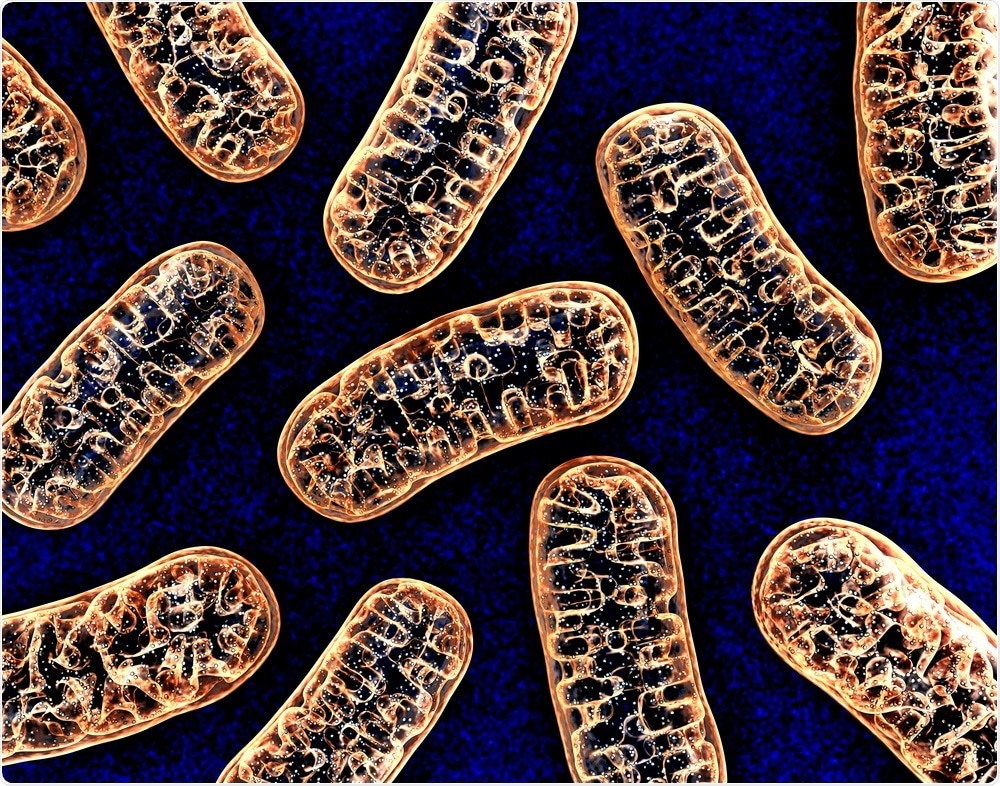Scientists from the University of Freiburg have identified a signaling protein that regulates the assembly of human cellular “power plants.”

Mitochondria. Image Credit: 3d_man/Shutterstock.com
A range of diseases like Parkinson’s and Alzheimer’s is caused by errors in the metabolic processes of mitochondria. Researchers had to identify how the necessary building blocks are transferred to the complex biochemical system of these cell areas.
The TOM complex, or translocase of the outer mitochondrial membrane, is regarded as the gateway to the mitochondrion, which is the proverbial powerhouse of the cell. Led by Professor Chris Meisinger from the Institute of Biochemistry and Molecular Biology at the University of Freiburg, the team has now shown how signaling molecules control this gate in human cells.
DYRK1A, a signaling protein, alters the molecular machinery of TOM and renders it more permeable for enzymes that are crucial for cell metabolism. The researchers thus identified the first signaling protein that directly affects this import process in humans. The study was published in the Nature Communications journal.
Developmental disorders in a new light
DYRK1A is found to be defective in neurodevelopmental disorders like Down’s syndrome, autism, and microcephaly.
The connection with mitochondria is new. These results allow us to better understand these disorders and develop treatment strategies.”
Dr Adinarayana Marada, Institute of Biochemistry and Molecular Biology, University of Freiburg
Dr. Marada is a member of Meisinger’s team.
For a long time, researchers thought that the TOM complex was a rigid structure in the mitochondrial membrane whose doors were always open.”
Chris Meisinger, Professor, Institute of Biochemistry and Molecular Biology, University of Freiburg
Recently, Meisinger and his colleagues unraveled signaling mechanisms in baker’s yeast that modify the subunits of the TOM complex based on the metabolic state of the cell, or as a response to unexpected stress.
Thus, the cell can particularly regulate the influx of precursor proteins to build elements of the metabolism. It can even adapt the mitochondria’s function to a modified cellular state. It was not known earlier whether such mechanisms occur in humans as well.
DYRK1A acts upon the TOM complex
Dr. Corvin Walter and Dr. Adinarayana Marada of Meisinger’s team are the first authors of the study and created a systematic method to find the signaling mechanisms, for example, those activated by protein kinases, in humans.
In the past, they investigated candidates with cell biological and bioinformatic methods and identified what they were looking for—DYRK1A, one such protein kinase, has an impact on the TOM complex. “With this, we actually found the needle in the haystack,” concluded Walter.
Source:
Journal reference:
Walter, C., et al. (2021) Global kinome profiling reveals DYRK1A as critical activator of the human mitochondrial import machinery. Nature Communications. doi.org/10.1038/s41467-021-24426-9.